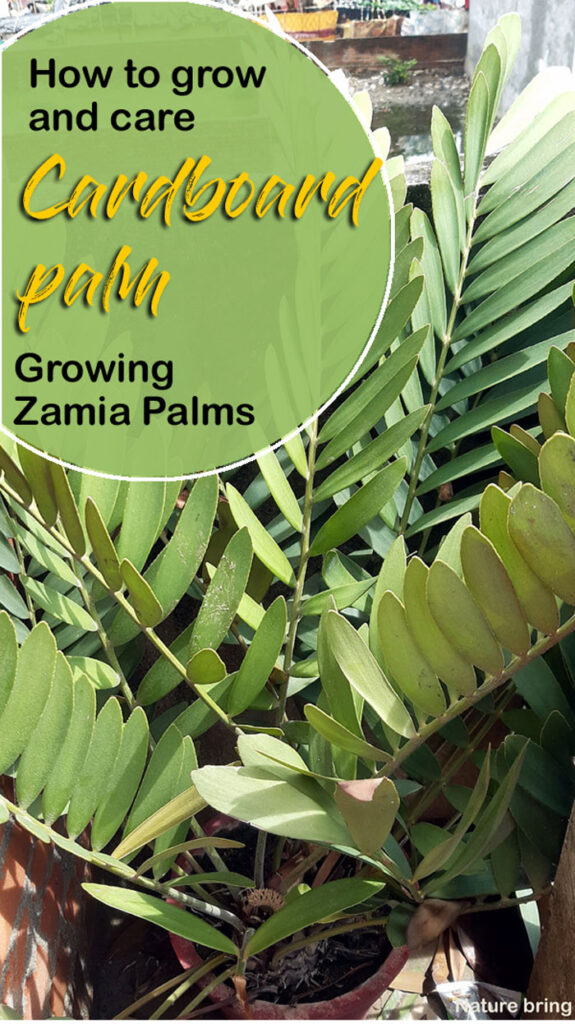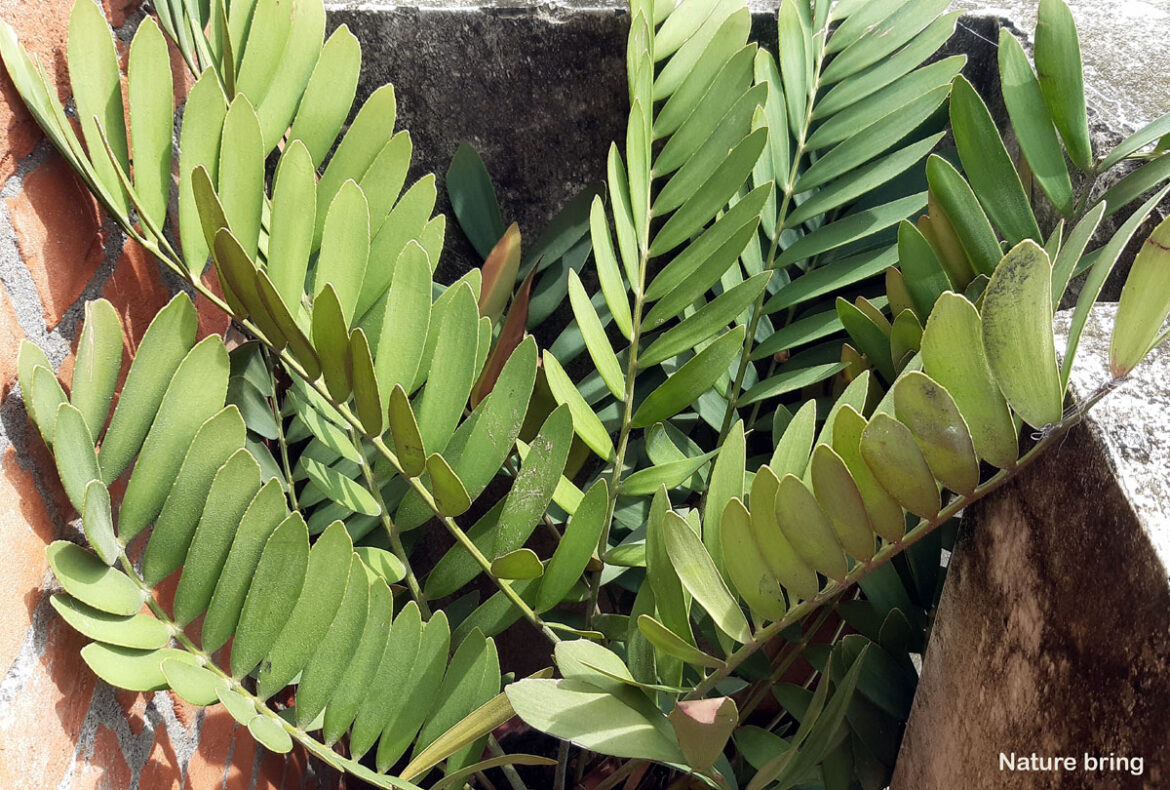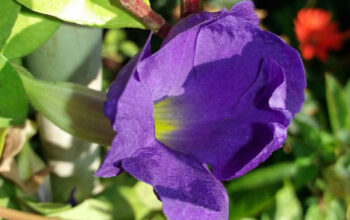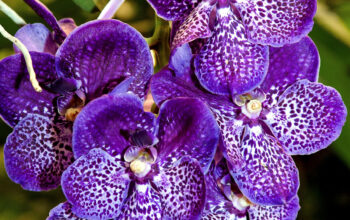Cardboard Palm ( Zamioculcas )
This plant is not a palm but it seems to have similar growth habits, which is why it is commonly called the cardboard palm or cardboard cycad (Zamioculcas). The cardboard plant is also known as cardboard sago, a Jamaican sago, or Mexican cycad. This plant has a short, usually subterranean trunk that is up to 20 cm in width and height, usually with scars from old leaf bases. Overall, the plant grows to 1.3 m tall with a width of about 2 m. It is covered with narrow, stiff, pubescent green leaves with a petiole 15–30 cm long and several pairs of extremely stiff, pubescent leaflets. The leaflets are 8–20 cm long and 3–5 cm wide.
The entire plant is poisonous, including the leaves. The toxic effects cause liver failure, kidney failure, and eventual paralysis. Dehydration occurs rapidly. No treatment for the poisoning is currently untreatable.
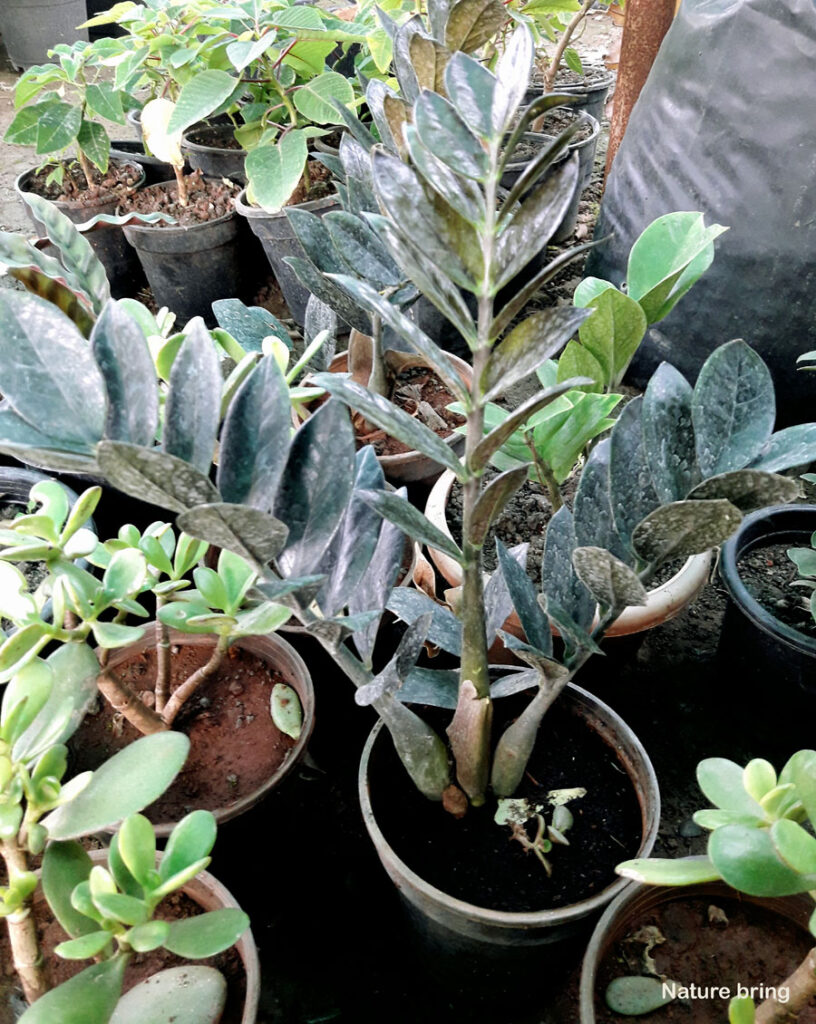
How to Grow and Care Cardboard Palm (Zamioculcas)
Spring is the best time to plant it since it has a slow growth rate. It is common to keep it as a houseplant outside of its tropical growing zones. A cardboard palm is a hardy plant that generally doesn’t require much maintenance.
Growing from seeds
As zamioculcas zamiifolia seeds can eventually reach a diameter of 6 feet, plant them approximately 8 feet apart. Sprinkle a little water on the seeds and keep the soil slightly moist but not soggy for several months. A cardboard palm could take as long as three to four months to sprout.
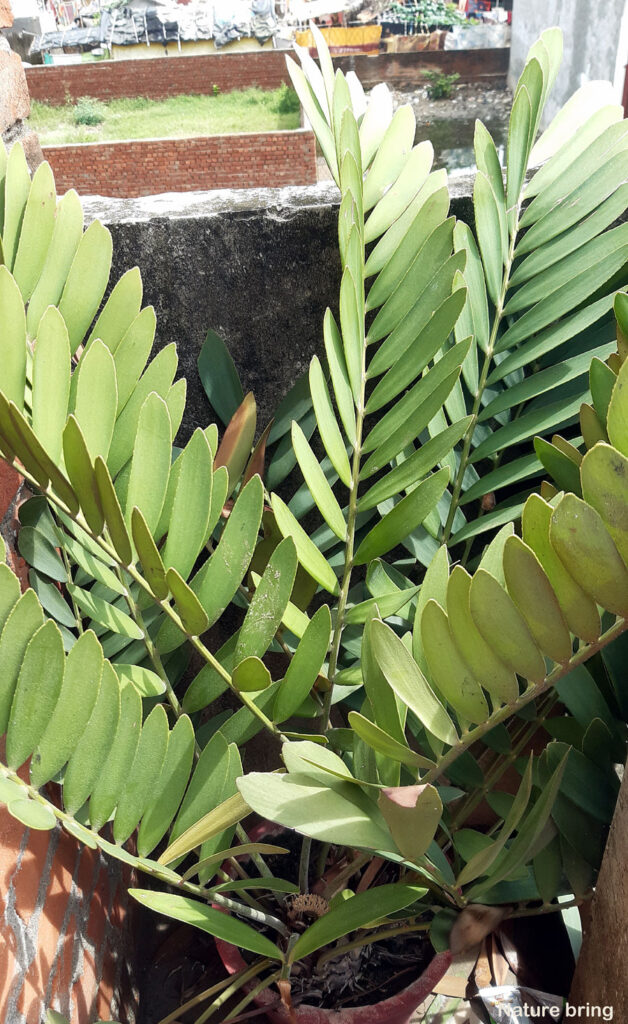
Propagation
Collect tiny red seeds from an open cone on a female cardboard palm. Keep the seeds stored in plastic bags until used. The seeds can be harvested and separated on a paper towel. Inflate moist sand-filled flats as soon as possible after the seeds are sown. Keep the young plants in a balanced amount of sunlight to prevent the fronds from getting hurt. Keep the sand moist. After the plant has produced two sets of true leaves and the roots are strong, it can be potted.
Sunlight
It is recommended that cardboard palms receive six hours or more of direct sunlight on most days. In the growing season and when the plant is young, full sunlight benefits the plant most, but the plant can also thrive in partial daylight. It is best to avoid areas with too much shade where the light is too dim to support the plant’s growth. Ensure that your plant grows evenly in front of the window by turning it regularly. Without this, the stems will grow toward the sun, resulting in a plant with an uneven growth pattern.
Soil
If they have good drainage, these plants are capable of tolerating a wide range of soil types. pH 6.0 is the ideal pH for growing these plants. To use in a container, mix with equal parts of peat moss and sharp sand, or use a potting mix that drains well.
Watering
Cardboard palms require only a moderate amount of water to maintain their shape. Water them thoroughly, then let the top 2 inches dry before watering again. Properly drain the ground to prevent it from getting too wet. Too much water can rot the roots. Water your plants whenever the top inch of soil feels dry, from spring to fall. Do not get water on the base or the foliage of this semi-succulent, which can cause it to rot.
Temperature and Humidity
The ideal temperature ranges from 60° to 75° Fahrenheit (15°–24° C), although plants are capable of surviving around 15° Fahrenheit above this level. Cardboard palms are reasonably hardy plants. Even though they can withstand heat, frost and cold temperatures can kill or damage them.
Their preferred humidity level is low to average. A room with an average relative humidity of around 40–45% or a dryer will do.
Fertilizer
Apply general palm food or slow-release fertilizer to the plant. It is recommended to submit one application at the beginning of spring and the other at the beginning of fall.
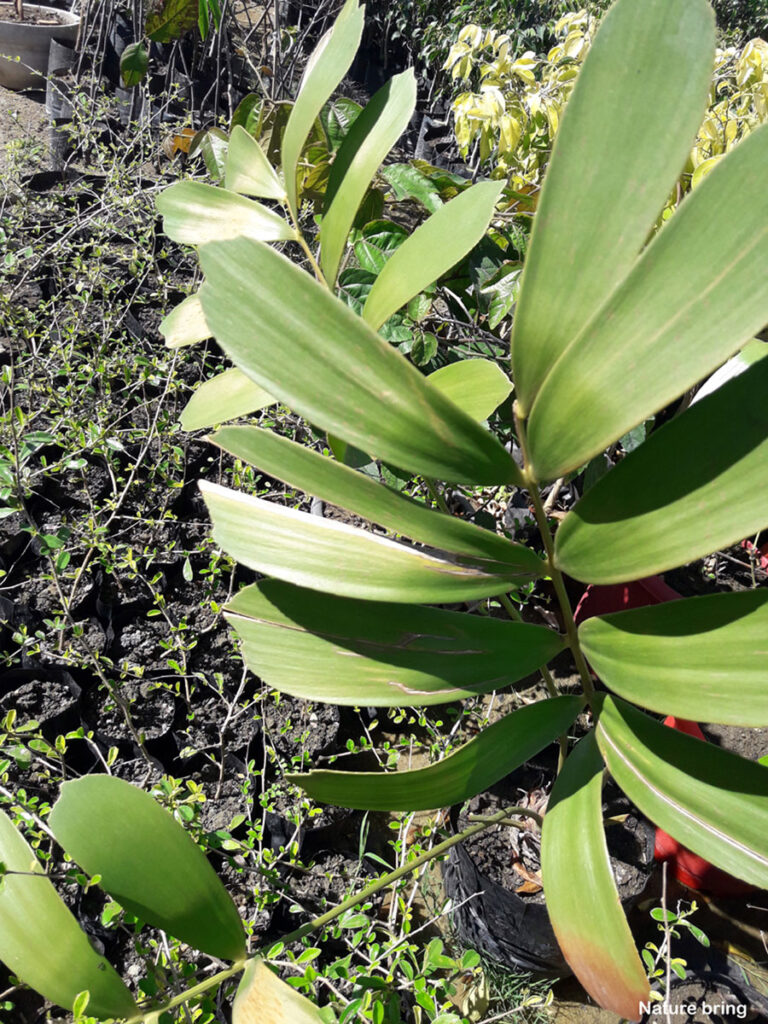
Pruning
To improve the health and appearance of the cardboard plant, prune it once a year during late winter. To remove dead, diseased, or damaged fronds, use hedge clippers. It’s best to burn diseased growth away from nearby plants to prevent the spread of this illness.
Read also:
Viburnum growing and care tips. Persian shield houseplants growing guide. Anise plants growing and care guide. Ice plants growing in your garden. 07 Most Popular Kalanchoe varieties.
For pin:
